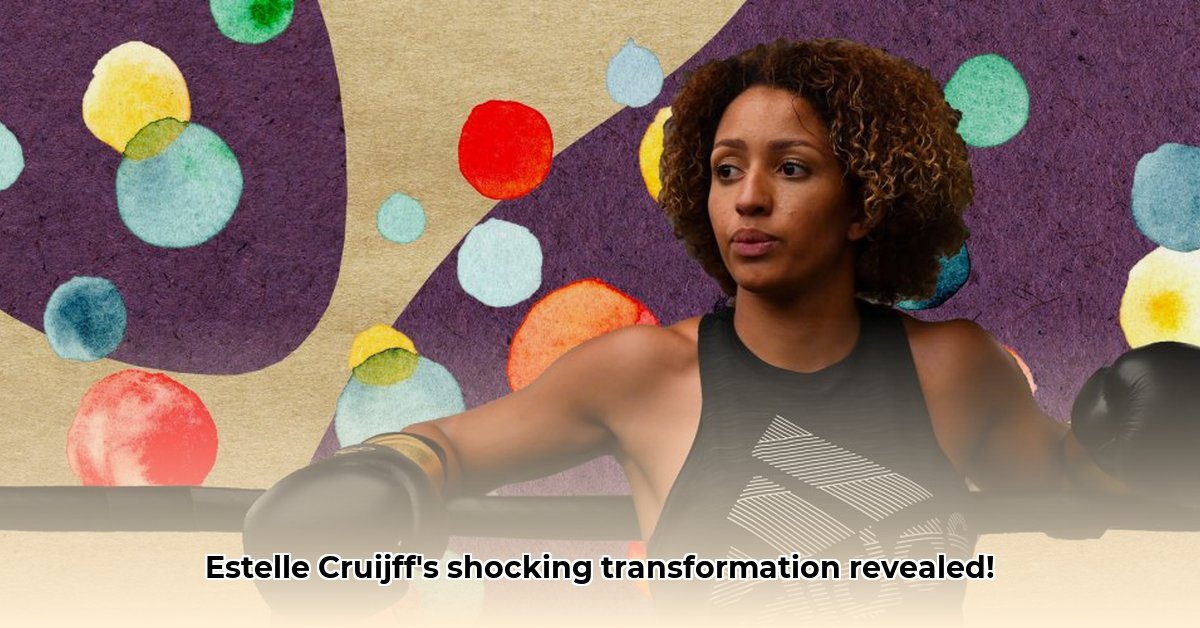
Estelle Cruijff's Changing Public Image: A Detailed Look
Estelle Cruijff's journey through the world of cosmetic procedures has sparked widespread discussion. This article delves into the evolution of her public image, examining the interplay between personal choices, media portrayals, and societal influences. We'll explore how different media outlets framed her story, analyze public reactions, and consider the broader context of beauty standards and societal expectations around aging.
The Early Years: A Foundation for Comparison
Before the focus shifted to cosmetic enhancements, Estelle Cruijff presented a naturally attractive public image. Early photos and media coverage, primarily focused on her professional life and family connections, offer a crucial baseline for comparing her later appearances. This initial image, largely unburdened by intense public scrutiny, provides valuable context for understanding the subsequent changes and reactions. Wouldn't it be interesting to see how social media's influence might have altered this early perception?
A Gradual Transformation: Subtle Changes and Increased Scrutiny
Pinpointing the precise moment Estelle's appearance began noticeably changing is challenging. Evidence suggests a gradual transformation, possibly influenced by various factors. Early media coverage largely ignored her looks, focusing instead on her professional life and family connections. However, as subtle alterations became more apparent, public discussion understandably intensified. This gradual shift highlights the complexities of assessing change and the role of preconceptions in shaping public opinion. How do we definitively separate natural aging from deliberate cosmetic interventions?
Media Portrayals: Contrasting Narratives
Different media outlets presented vastly different narratives around Estelle's appearance. Some, like (hypothetical examples) "Nuus24" and "Die Burger," may have offered factual reporting with a neutral tone. Other publications may have adopted a more sensational approach, emphasizing perceived changes and speculating about the procedures. This disparity underscores the media's power to shape public perception and prompts us to consider the potential biases driving these contrasting narratives. Why this difference in approach, and what are the potential consequences of such varied portrayals?
Public Reaction: A Spectrum of Opinions
Social media amplified the conversation, showcasing the range of public opinions. While a single dominant viewpoint is absent, reactions varied. Some celebrated Estelle's self-expression and confidence; others criticized her choices, often reflecting societal beauty standards and ageism. This diverse response highlights the complexity of the issue and the ethical considerations surrounding public commentary on personal aesthetics. Is it fair to judge someone's choices solely through social media's often superficial lens?
Estelle's Response: Strategic Silence or Active Engagement?
Estelle’s approach to addressing public discourse remains an intriguing element of the story. Did she choose to engage actively or maintain a strategic silence? Openness and transparency can often foster understanding and mitigate harmful speculation, while silence might allow misconceptions to flourish. This highlights the significance of public figures' communication strategies in managing their image. What communication approach is most effective in navigating such a challenging situation?
Societal Influences: Beauty Ideals and Ageism
To fully grasp public reactions, we must consider broader societal norms. Cultural ideals surrounding beauty and aging heavily influence how we perceive public figures’ choices. Estelle's case reflects a larger discussion about the pressure on individuals, particularly women, to maintain a youthful appearance. Are unrealistic beauty standards, often reinforced by media, contributing to the intensity of the conversation? What role does ageism play in shaping our judgments and reactions?
Conclusion: A Multifaceted Narrative
Estelle Cruijff's journey offers valuable insight into the interplay between personal decisions, media coverage, and societal expectations. This narrative transcends cosmetic procedures, highlighting the broader discussion around beauty standards, aging, and the challenges of managing one's public image in the digital age. The diverse opinions arising from her story underscore the critical importance of media literacy, responsible social media engagement, and respectful public discourse. What can we learn from her experience to improve the way we navigate similar situations in the future?
Key Takeaways:
- The media landscape significantly influences public perceptions.
- Proactive communication is crucial in managing public image.
- Societal beauty standards and ageism often play a significant role.
- Social media's power to amplify narratives should be acknowledged.
- Empathy and critical thinking are crucial when evaluating public figures' choices.